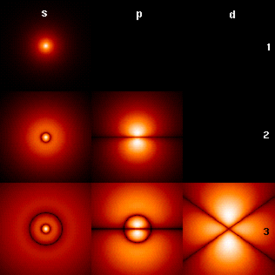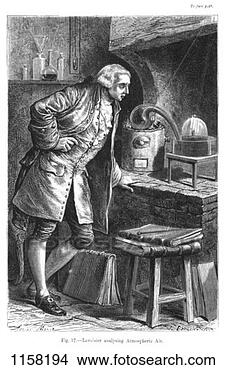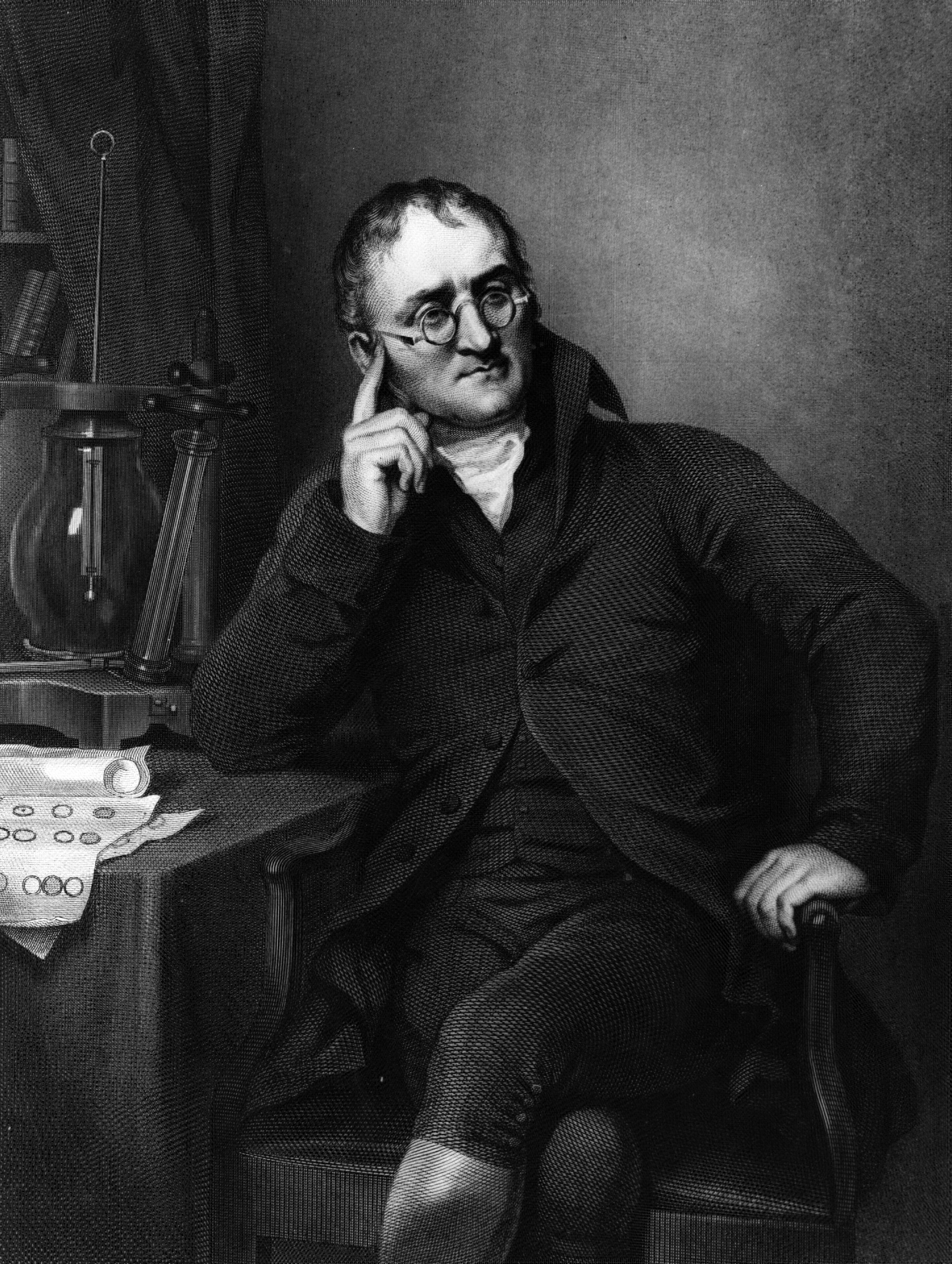John Dalton
atomic model of john dalton
Dalton's theory was based on the premise that the atoms of different elements could be distinguished by differences in their weights. He stated his theory in a lecture to the Royal Institution in 1803. The theory proposed a number of basic ideas:
All matter is composed of atoms
Atoms cannot be made or destroyed
All atoms of the same element are identical
Different elements have different types of atoms
Chemical reactions occur when atoms are rearranged
Compounds are formed from atoms of the constituent elements.
Using his theory, Dalton rationalised the various laws of chemical combination which were in existence at that time. However, he made a mistake in assuming that the simplest compound of two elements must be binary, formed from atoms of each element in a 1:1 ratio, and his system of atomic weights was not very accurate - he gave oxygen an atomic weight of seven instead of eight.
Despite these errors, Dalton's theory provided a logical explanation of concepts, and led the way into new fields of experimentation.
Dalton's atomic model is one of the fundamentals of physics and chemistry. This theory of atomic composition was hypothesized and partially confirmed by the English chemist and Physicist John Dalton. Dalton came with his Atomic theory as a result of his research into gases. He discovered that certain gases only could be combined in certain proportions even if two different compounds shared the same common element or group of elements. Through deductive reasoning and experimentation, he made an interesting discovery. His findings led him to hypothesize that elements combine at the atomic level in fixed ratios. This ratio would naturally differ in compounds due to the unique atomic weights of the elements being combined.
This was a revolutionary idea but further experimentation by himself and others confirmed his theory. The findings became the basis of of Dalton's Atomic Laws or Model. These laws focus on five basic theorems. First, Pure Elements consist of particles called atoms. Second,atoms of an element are all the same for that element. That means gold is gold and oxygen is oxygen down to the last atom. Third, atoms of different elements can be told apart by their atomic weights. Fourth, atoms of elements unite to form chemical compounds. Finally, atoms can neither be created or destroyed in chemical reaction. The grouping only changes.
The last of Dalton's atomic laws were at the time considered true for all reactions involving atoms. This was later corrected with the discovery of nuclear fission and fusion. So we now know that this only holds true for chemical reactions.
Like other scientific theories, Dalton's atomic model has been perfected over time with the research and discoveries of other scientists. We now know that the atom can be divided into even smaller particles and we have even discovered the actual internal structure of the atom, even able to view it through modern technology. We now know that atomic weight is a product of the structure of the atoms as well.
This atomic theory made possible modern chemistry and physics. Up until Dalton's time the atom was only considered to a philosophical construct passed down by the ancient Greeks. Dalton's ground breaking work made theory reality. This understanding the atom helped to fuel many other discoveries such as the fundamental forces and Einstein's theory of relativity. It is especially is important when one goes into Quantum physics a discipline that looks at physics at the atomic and subatomic levels.
In 1800, Dalton became a secretary of the Manchester Literary and Philosophical Society, and in the following year he orally presented an important series of papers, entitled "Experimental Essays" on the constitution of mixed gases; on the pressure of steam and other vapours at different temperatures, both in a vacuum and in air; on evaporation; and on the thermal expansion of gases. These four essays were published in the Memoirs of the Lit & Phil in 1802.
The second of these essays opens with the striking remark,
There can scarcely be a doubt entertained respecting the reducibility of all elastic fluids of whatever kind, into liquids; and we ought not to despair of affecting it in low temperatures and by strong pressures exerted upon the unmixed gases further.
After describing experiments to ascertain the pressure of steam at various points between 0 and 100 °C (32 and 212 °F), Dalton concluded from observations on the vapour pressure of six different liquids, that the variation of vapour pressure for all liquids is equivalent, for the same variation of temperature, reckoning from vapour of any given pressure.
Biography
John Dalton is now called the father of modern atomic theory for his efforts. His atomic theories were introduced in 19th century England.
In September of 1803, John Dalton wrote his first table of atomic weights in his daily logbook. In 1830, he stated his most well-known quote (at the top of this webpage). Two years after he developed his atomic weights, he published them in a book called "A New System of Chemical Philosophy. In it he was the first to propose that elements be identified with symbols. However, only 3 or 4 pages in the third chapter discussed the atomic theory he proposed.
John Dalton FRS (6 September 1766 – 27 July 1844) was an English chemist, meteorologist and physicist. He is best known for his pioneering work in the development of modern atomic theory, and his research into colour blindness (sometimes referred to as Daltonism, in his honour).
John Dalton was born into a Quaker family at Eaglesfield in Cumberland, England. The son of a weaver, he joined his older brother Jonathan at age 15 in running a Quaker school in nearby Kendal. Around 1790 Dalton seems to have considered taking up law or medicine, but his projects were not met with encouragement from his relatives — Dissenters were barred from attending or teaching at English universities — and he remained at Kendal until, in the spring of 1793, he moved to Manchester. Mainly through John Gough, a blind philosopher and polymath from whose informal instruction he owed much of his scientific knowledge, Dalton was appointed teacher of mathematics and natural philosophy at the "New College" in Manchester, a Dissenting academy. He remained in that position until 1800, when the college's worsening financial situation led him to resign his post and begin a new career in Manchester as a private tutor for mathematics and natural philosophy.
Dalton's early life was highly influenced by a prominent Eaglesfield Quaker named Elihu Robinson, a competent meteorologist and instrument maker, who got him interested in problems of mathematics and meteorology. During his years in Kendal, Dalton contributed solutions of problems and questions on various subjects to the Gentlemen's and Ladies' Diaries, and in 1787 he began to keep a meteorological diary in which, during the succeeding 57 years, he entered more than 200,000 observations.[1] He also rediscovered George Hadley's theory of atmospheric circulation (now known as the Hadley cell) around this time.[2] Dalton's first publication was Meteorological Observations and Essays (1793), which contained the seeds of several of his later discoveries. However, in spite of the originality of his treatment, little attention was paid to them by other scholars. A second work by Dalton, Elements of English Grammar, was published in 1801.






























